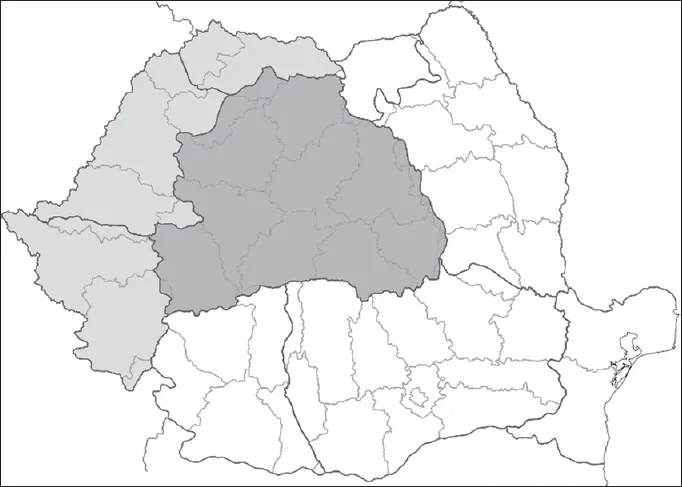![]()
1. Investigating Neolithic and Copper Age Textile Production in Transylvania (Romania). Applied Methods and Results
Paula Mazăre
The functional, practical and symbolic importance of textiles in everyday life, and also during special events (ceremonies, celebrations, rituals, etc.) within human communities, has been highlighted by numerous studies in anthropology, history and archaeology.1 The textile remains found during archaeological excavations are seen, according to researchers like Penelope Walton and Gillian Eastwood (1983), as being “the remains of one of man’s more intimate artefacts”. However, the importance of textile products and that of the activities devoted to textile production in prehistory was generally ignored by Romanian archaeologists. This is due to the scarcity of such archaeological remains.2
The significant advances made by researchers in the West compared with the sporadic and inconsistent efforts from Romania3 now fully justifies the need for a systematic and scientific approach, intended towards aligning Romania with the Western European map of discoveries and research on prehistoric textiles. This is particularly true since the new trends for this field of study suggest a growing interest in this area of research.4
This paper aims to summarise the research performed as part of my PhD thesis, entitled “The craft of textile production at Neolithic and Copper Age communities in Transylvania” which was finalised in July 2012. The main focus of the research was to characterise the craft of textile production (with all its economic, social and symbolic implications) during the Neolithic and Copper Age, within the geographical context of Transylvania. This was archeived using the main evidence preserved in the local soil conditions (specific for the entire southeast of Europe): the pottery textile imprints and textile tools (spindle-whorls, loom-weights and spools).
The unusual character of this paper in the context of Romanian archaeological research justifies to a large extent the limitation of the research area to a confined geographical unit, represented here by Transylvania. Among the obstacles encountered during this research were the difficulty of finding and gathering the material necessary for such a study (over 15 museum collections were browsed and not always successfully), the absence of data for the context of discovery, and the difficulty of cultural and chronological affiliation/classification for some of the artefacts.5
Area of the research
Transylvania as an entity is defined as the Inner-Carpathian area of Romania, a historical region which was known during the Middle Ages as “The Voivodate of Transylvania” or “Voivodal Transylvania”. Geographically, it corresponds to the Depression of Transylvania, bordered by segments of the Carpathian Mountains on the East, South and West .
Figure 1.1 shows that the sites examined for this study do not cover the entire surface of Transylvania evenly. This is partly due to the fact that only some specific Neolithic and Copper Age sites were archaeologically excavated and even these were not always systematically and exhaustively researched. In addition, access to museum collections were in some cases restricted. As a result there is an uneven distribution of the analysed material within the area of study. In order to compensate, the research and analysed materials belonging to some north-western settlements, situated beyond the geographical limits previously established, were used.
Materials originating from 54 sites, consisting of textile imprints, spindle-whorls, loom-weights and spools were studied. There is a clear disproportion among the three categories of materials. The most representative are the loom-weights (identified in 45 sites, including three sites with discoveries of spools), then the spindle-whorls (23 sites) and the textile imprints (identified only in 11 sites).
Cultural and chronological framework
Defining the Neolithic and Copper Age and establishing a chronology is somewhat of a difficult task if one considers the different periodisation systems proposed by the literature.6 The terminology used is also a subject of interpretation and dispute. In Romanian archaeological literature the term Aeneolithic or Chalcolithic7 is found and used to broadly designate the same period known in the Western literature as ‘Copper Age’ (or ‘Kupferzeit’ in German). The author preferred the term Copper Age instead of Aeneolithic in order to align with an older current8 that aims at adapting the archaeological realities from present day Romania to the central and western European terminology.
Fig. 1.1: Map of the Neolithic and Copper Age sites from Transylvania that provided characteristic finds of textile production: textile imprints and textile tools.
Since there are many contradictory opinions regarding the final phase of the Copper Age (Late Copper Age or Late Aeneolithic),9 that time period was not included as part of the research. Therefore, the research is carried out upon the following cultures/cultural groups which are chronologically situated between c. 6000–3500 BC: Starčevo-Criş (c. 6100–5300 BC), Vinča (c. 5400–4500 BC), Cluj-Cheile Turzii-Lumea Nouă cultural complex (c. 5200–4900 BC), Linear Pottery culture (Notenkopfhorizon c. 5000–4950 BC), Iclod (c. 4900–4600 BC), Suplac (c. 5200–4650 BC), Oradea-Salca-Herpály (c. 5000–4500 BC), Turdaş (c. 5050–4930 BC), Foeni (c. 4750–4450 BC), Petreşti (c. 4600–4000 BC), Ariuşd (Cucuteni A1–A4 – c. 4600–4050 BC), Tiszapolgár (c. 4500–4000 BC) and Bodrogkeresztúr (Scheibenhenkel horizon – c. 4050–3500 BC).10
The analysis of textile imprints
Even though there is a great resemblance between the textile products and the half-rigid or rigid basket-like or mat-like structures (basketry or wickerwork), the author supports the definition of Elisabeth Barber in separating these two categories of artefacts. According to Barber, textiles represent all types of woven and non-woven materials that look like “thin sheets of material made from fib...


